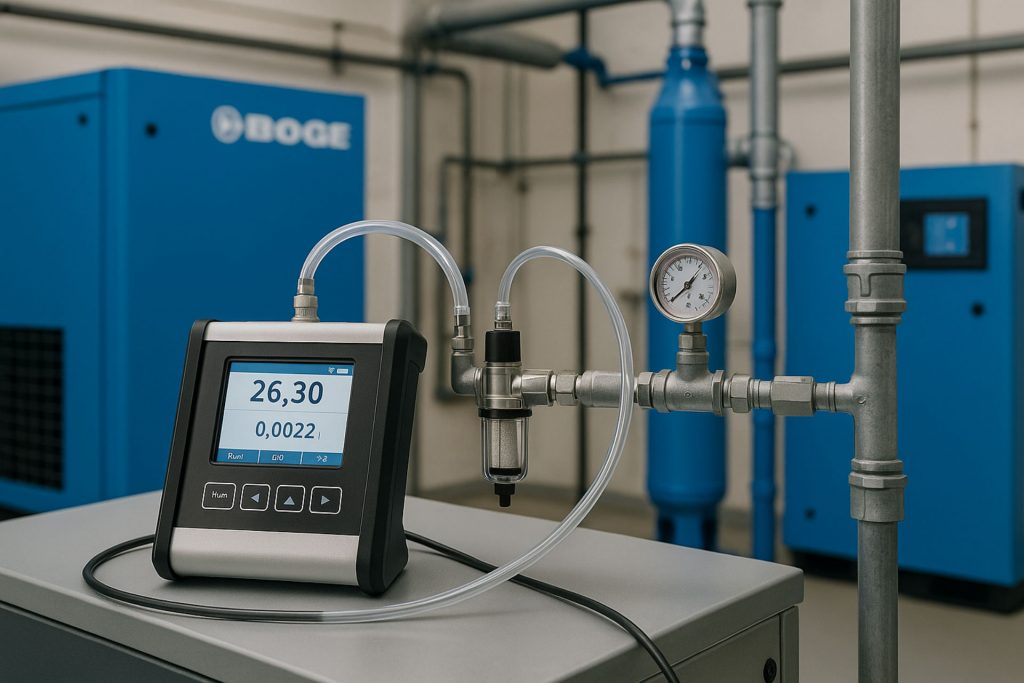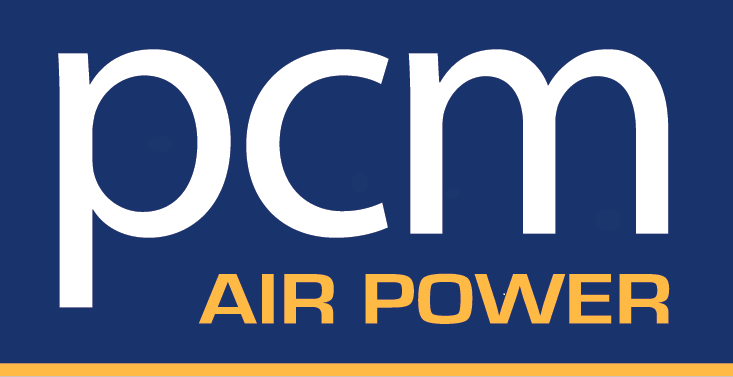Know Your Air, Prove Your Standards
Our inspection audit assesses the purity of your compressed air against your process requirements and relevant standards. You’ll receive a clear report and practical recommendations to close any gaps.
What We Check:
- Air purity versus ISO 8573-1 classes
- Condition and sizing of dryers and filters
- Points of use at critical applications
- Risks of re‑contamination in distribution
Deliverables:
- Easy-to-read report with results and actions
- Recommendations for treatment upgrades or maintenance
- Optional follow‑up testing to verify improvements

Book an air quality inspection audit with PCM Engineering.
Ensure Your Purity: Professional Compressed Air Quality Testing by PCM AIRPOWER
In many industries, compressed air is classified as a utility that directly interacts with products or patients. If the air quality is compromised by contamination (particulate, water, or oil), the consequences can be severe, leading to product recalls, equipment damage, and failure to meet regulatory standards.
PCM AIRPOWER offers a comprehensive, on-site Compressed Air Quality Testing Service to accurately measure and report on the purity of your air supply, ensuring you meet the stringent requirements of your industry.
The Critical Advantages of Air Quality Testing
Regular, independent air quality testing is not just a regulatory requirement—it’s a crucial part of risk management and operational efficiency.
- Risk Mitigation: Identify contamination before it leads to production faults, equipment failure, or—in medical/food sectors—health risks.
- Compliance Verification: Provide auditable evidence that your system meets the specific purity standards required by bodies like the BRC (Food Safety), MHRA/FDA (Pharmaceuticals), or industry standards like ISO 8573-1.
- Filter Optimisation: Determine if your existing filtration system is working effectively and identify when filters need replacement, preventing unnecessary maintenance costs or contamination due to neglected elements.
- Legal Defence: Maintain a documented history of compliance, which can be essential in the event of product recall investigations or legal disputes.
Understanding Air Quality Specs: ISO 8573-1
The global standard for defining and measuring compressed air purity is ISO 8573-1. This standard classifies air quality based on the concentration of three main contaminants:
- Solid Particles (Particulate)
- Water (Pressure Dew Point)
- Total Oil (Aerosols, Liquid, and Vapour)
Each class is represented by a three-digit code (e.g., 7.4.2), where each number corresponds to the maximum permissible level of a specific contaminant.
| Contaminant | First Digit (e.g., 7.4.2) | Second Digit (e.g., 7.4.2) | Third Digit (e.g., 7.4.2) |
| Purity Class | Solid Particles (Microns & mg/m3) | Water (Pressure Dew Point – PDP) | Total Oil
(mg/m3) |
| Best Purity | Class 1 | Class 1 (-70C PDP) | Class 1 (0.01 mg/m3) |
| Typical High Purity | Class 2 | Class 4 (+3C PDP) | Class 2 (0.1mg/m3) |
| Oil-Free Guarantee | Class 1 | Class 1 | Class 0 (Specified by user) |
Our testing services deliver a certified report against these ISO 8573-1 classifications.
End-User Standards and Product Approvals
Different industries require different air quality standards to secure product approvals and remain compliant. You must test your compressed air to the required standard for your end-user application.
| Industry / Standard | Typical Air Quality Requirement | Why it Matters |
| Food & Beverage (BRCGS/ISO 22000) | Often require ISO 8573-1 Class 2.4.1 or better at the point of use (e.g., air contact with packaging/product). | Prevents microbial growth, spoilage, and contamination leading to product recall. |
| Pharmaceuticals & Medical Devices | High purity, typically ISO 8573-1 Class 1.2.1 for direct contact or breathing air systems. | Critical for patient safety and preventing contamination of sterile production environments. |
| Automotive / Surface Finishing | Often require very low particulate and oil content (e.g., Class 1.4.1) to prevent defects. | Ensures a flawless, blemish-free surface finish on painted or coated parts. |
| Electronics & Semiconductors | Extremely high purity, often Class 1.1.1 (or better) due to microscopic component size. | Prevents equipment failure and damage from microscopic particles or water condensation. |
The PCM AIRPOWER Testing Process
- On-Site Sampling: Our certified technicians visit your facility and take samples at key points-of-use using calibrated, third-party laboratory-approved equipment.
- Laboratory Analysis: Samples are sent to an accredited laboratory for precise analysis of the three contaminants (Particulate, Water, Total Oil).
- Certified Report: We provide you with a detailed, easy-to-read report showing your compressed air quality against the required ISO 8573-1 standards.
- Recommendations: Based on the results, we offer expert advice on filtration upgrades or maintenance adjustments to achieve or maintain compliance.
Don’t Guess. Test. Ensure your compressed air is meeting the standards your customers and regulators demand.
Ready to verify your compressed air purity and achieve product compliance?
Would you like to schedule an on-site air quality test for your facility?
